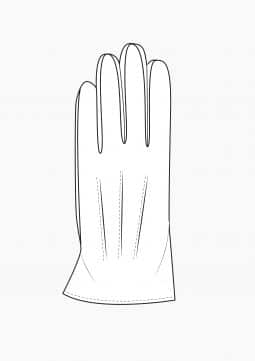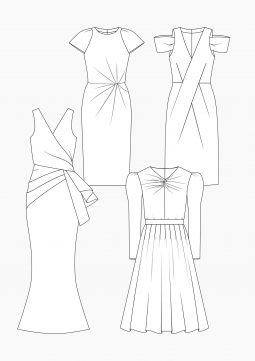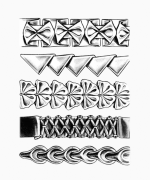How To Appliqué
Deutsch
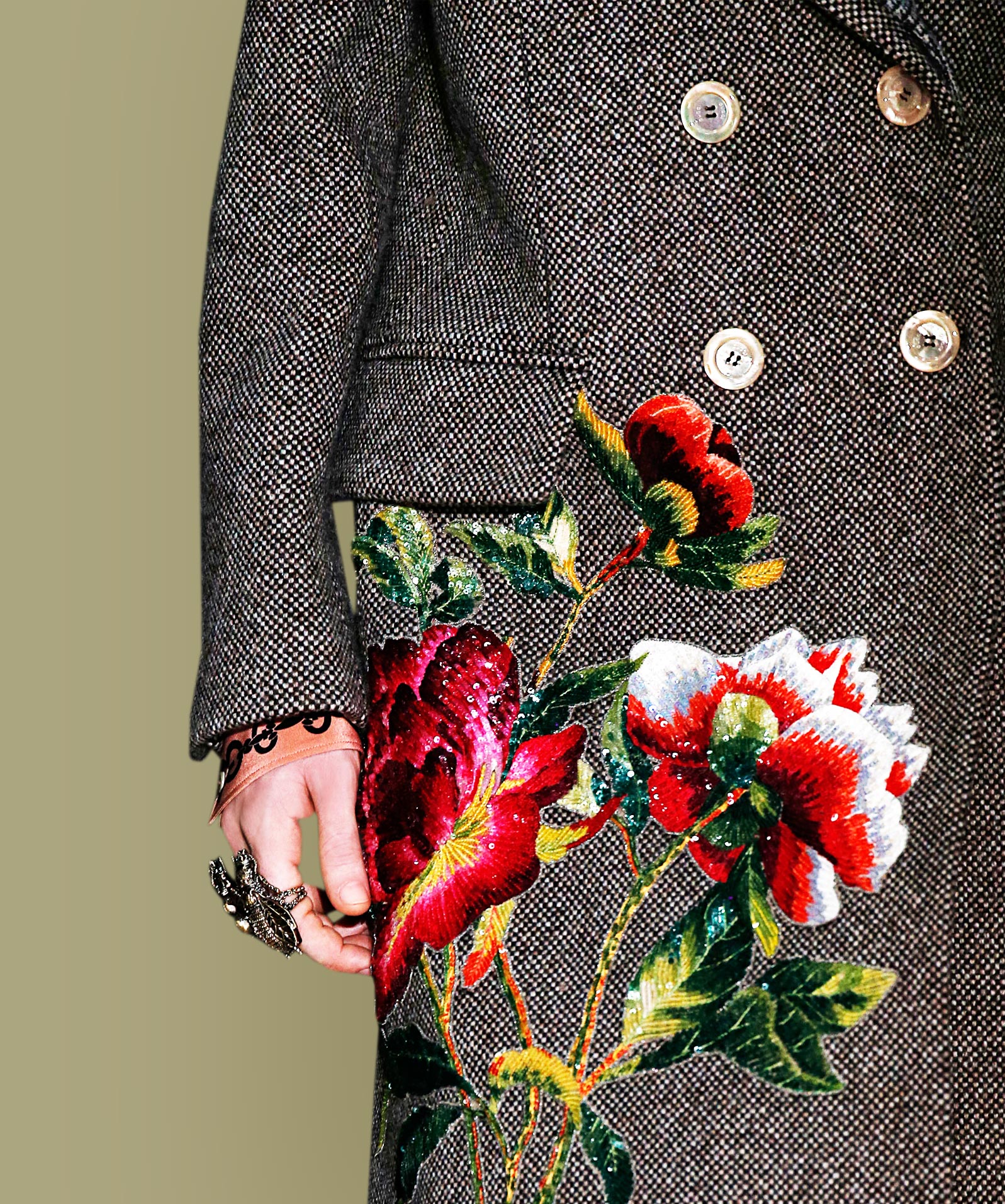
Appliqués on jackets, coats, skirts and elegant evening robes increase the value of a garment and make it unique. Artful applications are an absolute eye-catcher and an instant cure for boring designs. Styling tip: Use accessories sparingly!
The term appliqué has two meaningsIn in English and French – unlike in German: it either describes the implementation of a technique or the application itself (to apply or appliquer). As a loanword, we know the term appliqué as a needlework in which pieces of fabric are applied onto larger pieces to form a picture or pattern. As far as the theory! In practice, we deal with textiles, especially with individualized clothing and textile art.
Further contributions on textile processing and professional ornamental techniques can be found in the reference book Atelier – Fachwissen aus der Praxis Teil 1.
Content
- How to sew Appliqués?
- Wash & Care Instructions for Appliquéd Apparel
- Design and Placement of Appliqués
- Which materials can be applied?
- How to Appliqué
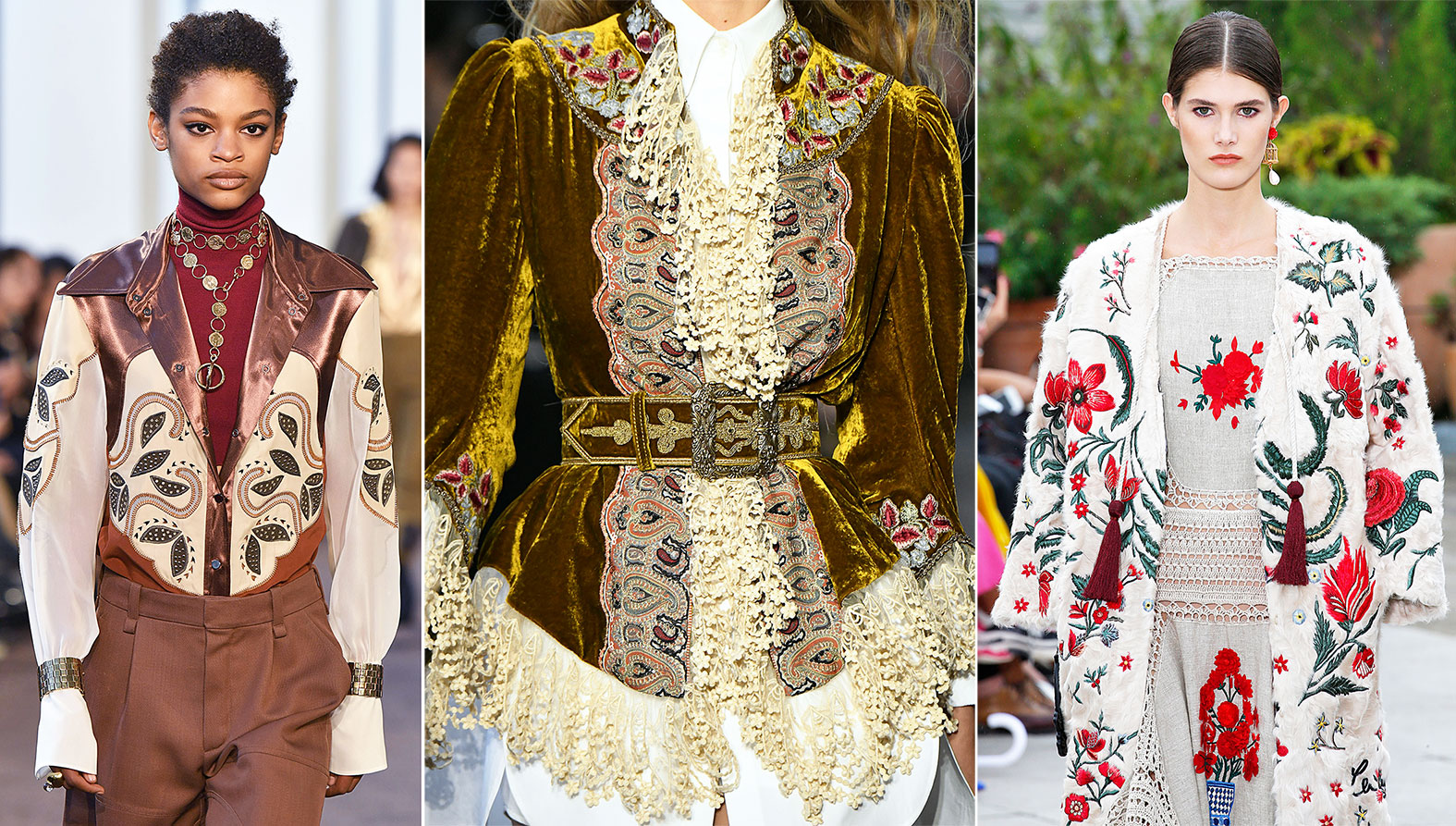
How to sew Appliqués?
There are limitless designs when applying appliqués to garments. You can apply all appliqué techniques from inlaid sewing, patchwork, to the Peruvian Mola technique to the sewing on different fabrics, ribbons, pearls, sequins and objects or embroidery. Lush, “hybrid” are the combinations of different techniques, while stylistically stricter, “puristic” is the use of one technique only. Instructions and tips for processing can be found under > How to Appliqué
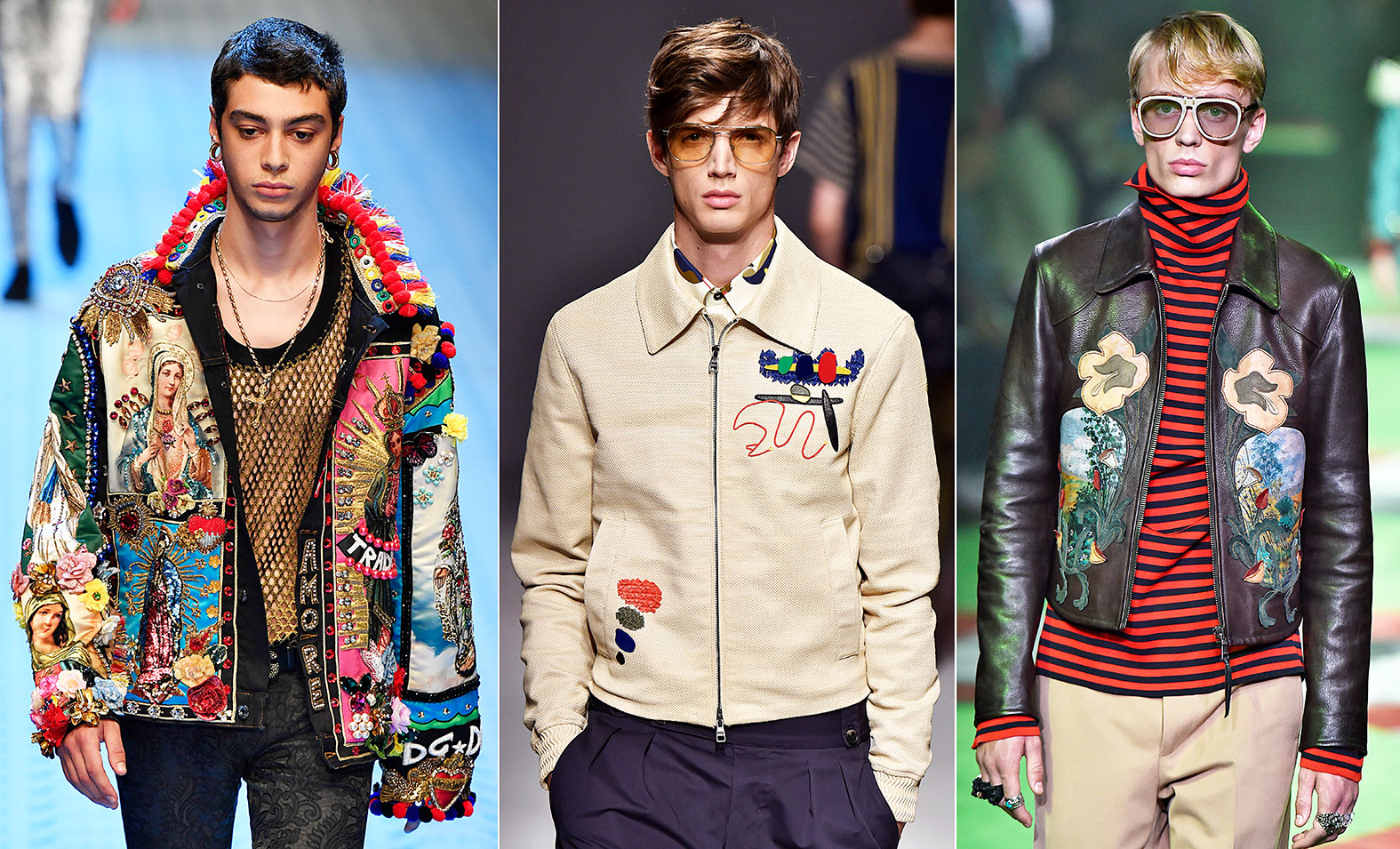
Wash & Care Instructions for Appliquéd Apparel
The first, professional “But” concerns the question of the cleaning options for apparel with appliqués. Especially if you and your customer consider unusual materials such as feathers, skins, leather, bast, or coconut, which may also have been dyed, this question should be asked. If in doubt, please consult the cleaning experts and also do your own washing with lukewarm water and mild detergent. Some of the materials, mother-of-pearl or shells, for example, can be wrapped in aluminium foil and can easily handle cleaning. Others, such as fur, leather or feathers require special treatment, which is not suitable for the entire garment or does not show the desired effect. Some leather qualities (e.g., chrome-tanned Nappa leather) are washable, but the term “wash leather” refers to a (synthetically tanned) sheep or lambskin with a ground, matte finish.
- The principle is: washability depends on the most sensitive ingredient. Practice shows: the more materials are processed together, the more difficult the care becomes. Careful hand washing, only a short soak, never wrestling or spinning, drying in a straight line lying down, gently ironing with low heat from the left are strongly recommended, unless a cleaning in a specialist company is absolutely necessary.
- Fabrics can be problematic application materials as well: they could shrink or stretch or “bleed”. Even plastic applications can cause problems because they are usually sensitive to heat and chlorine.

- Sequins and pearls are also sensitive to heat and chlorine, and often change their appearance dramatically and irreversibly on contact with superheated steam. Sequins and pearls, can also be lined and attached with basting stitches, if their components are not cleanable.
- Real rhinestones, on the other hand, are insensitive, as they consist of coloured or undyed glass. They can be glued on (Pay close attention to the pressure, temperature and time specifications provided by manufacturer!) or sewed on, if they have appropriate metal frames. Similar-looking plastic stones, which are offered in various shapes such as hearts, drops, etc., are indeed cheaper and usually provided with holes for sewing but they are sensitive to heat.
- Real fur and feather trimmings on necklines, collars, hems and cuffs can be lined and flexibly attached by button and buttonhole, hook and eye or push button.
- For cords, ribbons and laces, especially if you use them in contrasting colours, pay attention to the wash & care instructions (these should be noted on the plastic wrap) and supplement with your own washing tests and prewash if necessary. Especially viscose and cotton, tend to “bleed” as weak fibres do not absorb dye pigments properly. All the materials of decoration and craft departments, however beautiful they are, are generally not suitable for clothing since they are neither washable nor wear-resistant. If you process the appliqué and the base material firmly together, you may consider the different stretching characteristics of knitted and woven fabrics, fabrics that are cut diagonally to the grain-line, loose and tightly woven fabrics. Small differences can be adjusted by a interfacing, while big differences will lead to ugly dislocations after a certain period and some cleaning or washing processes.
- As beautiful as they may be, all materials from decoration and handicraft departments are generally suitable for handicrafts and not for clothing, as they are neither washable nor hard-wearing. If you work the application and the basic material firmly together, take into account the different stretch behaviour of knitted and woven fabrics, of fabrics used diagonally to the grain, of loose and densely woven fabrics. You can adjust small differences by using a fuser insert, but too big differences will lead to ugly warping after a certain wearing period and some cleaning or washing processes.
Design and Placement of Appliqués
Which form of the appliqué fits which body type?
- Shoulder accentuation > Narrow X figure with falling shoulders
- Diagonal line > Y figure with wide straight shoulder
- V shape > Round x figure with strong chest
- Bar shape > Narrow H-figure
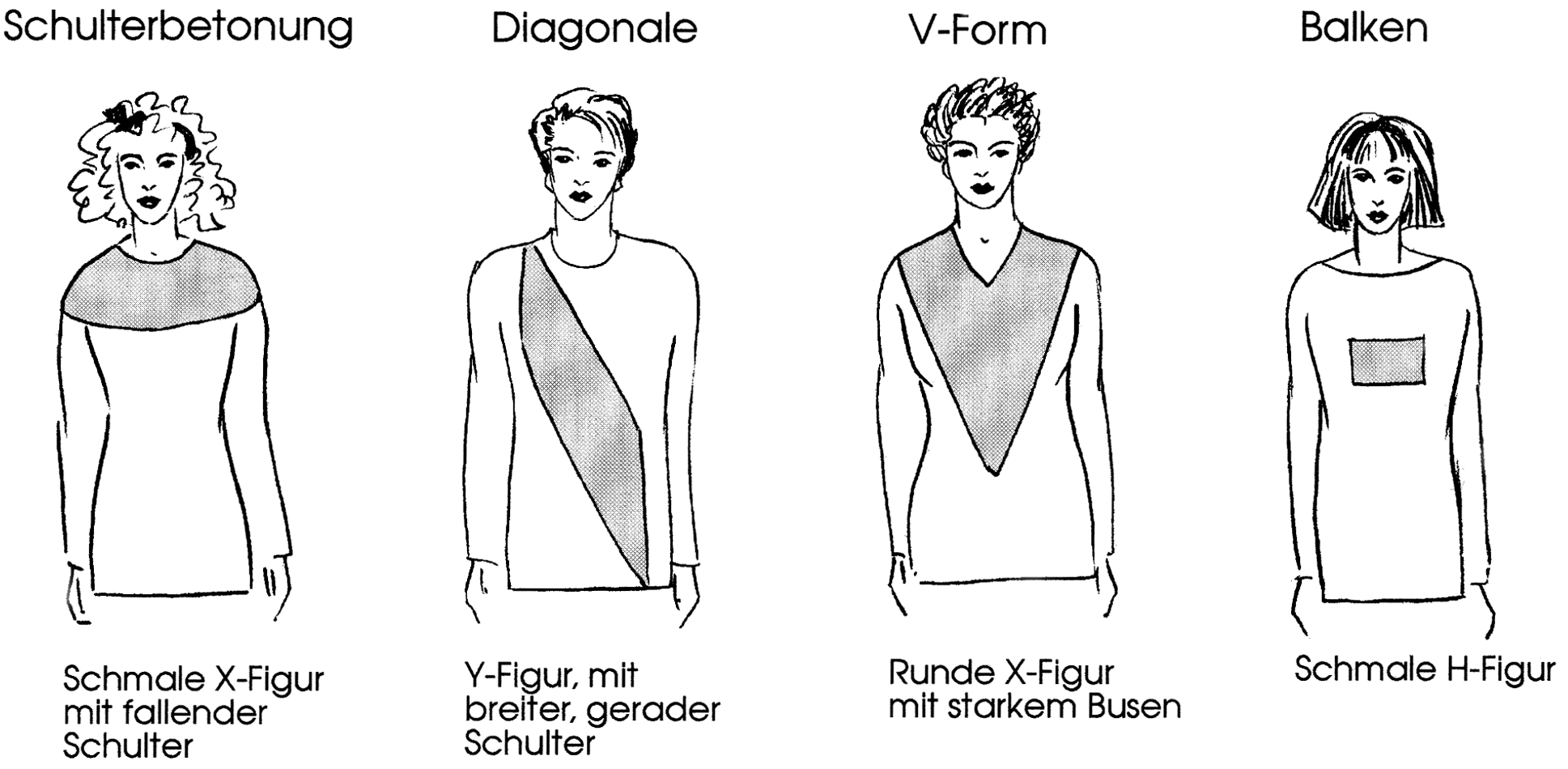
The second “but” concerns the design and placement of the appliqué. In addition to fashion aspects and personal preferences, the effect of appliqués has to be taken into account as well. These decorative elements have the task of effectively underlining the personality of the wearer and to flatter her figure. The dress should look astonishing, but do not drown the wearer! Pay attention to the figure and the complexion of the wearer.
- Rounded applications, flourishes and floral motifs, especially in discreet colour shades, are perceived as soft, emotional and feminine. Clear, generously curved or angular forms, especially with strong colour contrasts, are interpreted as strict, intellectual and masculine.
- Unusual, serrated and abstract forms, also with numbers and letters, are associated with dynamic, lively and youthfulness.
- Figurative applications such as bears, clowns, cows, etc. are currently only to be found in children’s fashion, especially in girls’ fashion.
- Flags, stripes, stars, coats of arms and emblems, on the other hand, can be found sporty department, which was heavily influenced by Ralph Lauren and Tommy Hilfiger.
- An important design principle for the placement and proportioning of applications is the “golden section”, which refers to a certain ratio of longitude and latitude to each other and to one another. In a nutshell, it is the ratio of 5 units of length to 8 units of length, be it centimetres, meters, feet or cubits.
Appliqués can conceal unfavourable body proportions and direct the look to the face, as the sketches show. The diagonal appliqué from the left shoulder to the right hem and v-shaped appliqués have proven to be particularly flattering. Narrow and sloping shoulders can be optically corrected with shoulder pieces and flat applications that extend beyond the sleeve cap. Appliqués that start between the shoulder and the chest and move dynamically towards the hem are perfect for athletically built women with straight and broad shoulders. These women often like a smaller appliqué that is placed in the middle and has its upper edge about 18 cm from the shoulder point. A lush bust can be concealed through diagonals, from the shoulder to the hem. The appliqué must be placed between the breast points. Appliqués and trimmings on the neckline accentuate the neck. They can stretch a short neck in V-necklines and attract attention to a beautiful décolleté and a slender neck.
- TIP: For the size of the appliqué (for average size adults), you can assume a minimum area of about 10 cm in diameter or the photo format 9 – 13 cm. Smaller areas must occur in groups, as individual motifs appear lost. The appliqué shouldn’t cover more than 1/3 of the designed surface (usually the front).
Which materials can be applied?
Technical tools such as Vliesofix (an adhesive applied transfer paper by Vlieseline) simplify the process and save time. It can be very useful for many fabrics.
- Felt Appliqués: Ironing on the fabric without sewing. It is quick and doesn’t unravel.
- Appliqués made of Fabric, Canvas, Flannel, etc : Can be interfaced. Finish the cut edges with zigzag stitches or in exceptional cases with raised buttonhole stitches.
- Multicolour Appliqués: Pay close attention to the sequence.
- Silk Appliqués: Not every silk fabric can be interfaced. If it’s not possible, topstitch the motif and trim excess seam allowances to the topstitching line first. Finish the cut edges with dense zigzag stitches.
- Lace Appliqués: Each pattern has a fixed edge. The edge can be finished with thin, colour matching yarn. Sew embroidery lace with small back stitches.
- Leather or Synthetic Leather Appliqués: Pay close attention to temperature and pressure when interfacing. In addition, topstitched edges are more durable and distinctive.
How to Appliqué
Which stitch is used to sew appliqués and how is the stitch arranged when covering the cut edges?
Sharp Corner
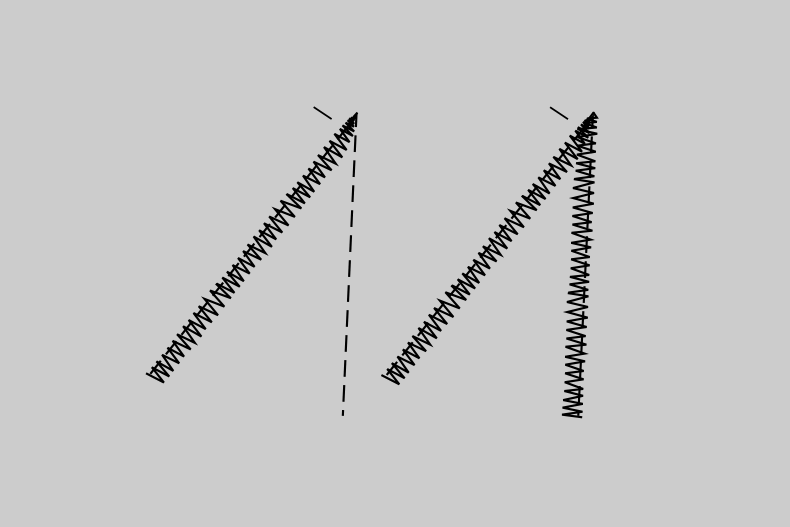
- Sew evenly to about 5 mm in front of the corner. Then return the zigzag to 0 during sewing. Raise the sewing foot, turn the sewing material, set the zigzag to the previous stitch width and continue sewing.
Rectangular Corner
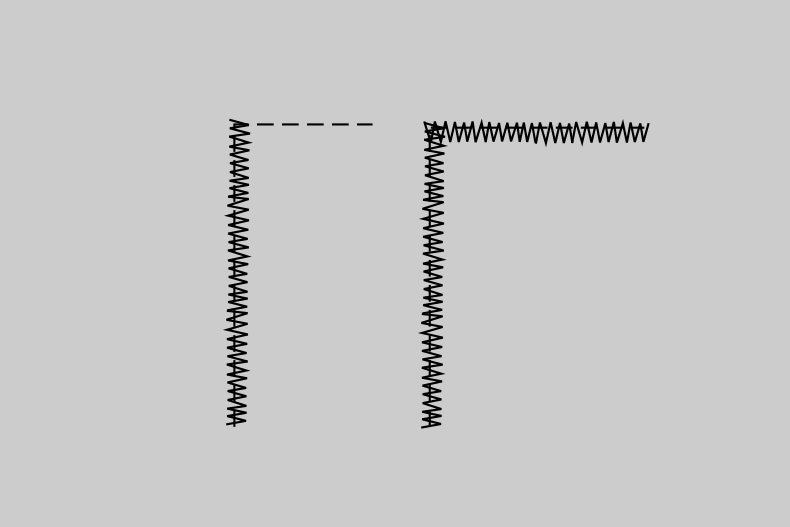
- Sew with the provided stitch width and stitch length to the corner, leave the needle on the outside line at the corner, lift the presser foot, turn the fabric and and continue sewing sew on. The corner is double stitched.
Obtuse Corner
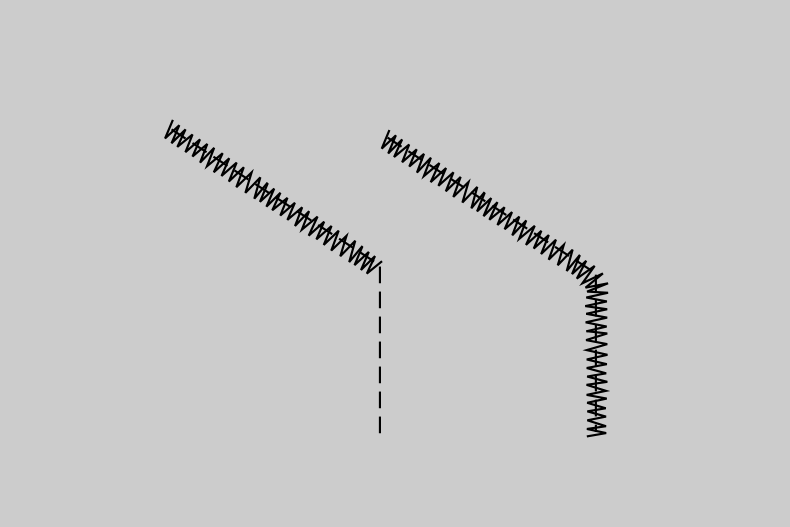
- Sew until the needle is exactly at the inner centre of the angle. Then sew out the corner in a radial shape. This means that after each stitch, the needle returns to the centre of the angle. Slightly turn the fabric achieve a closed outline.
Curves
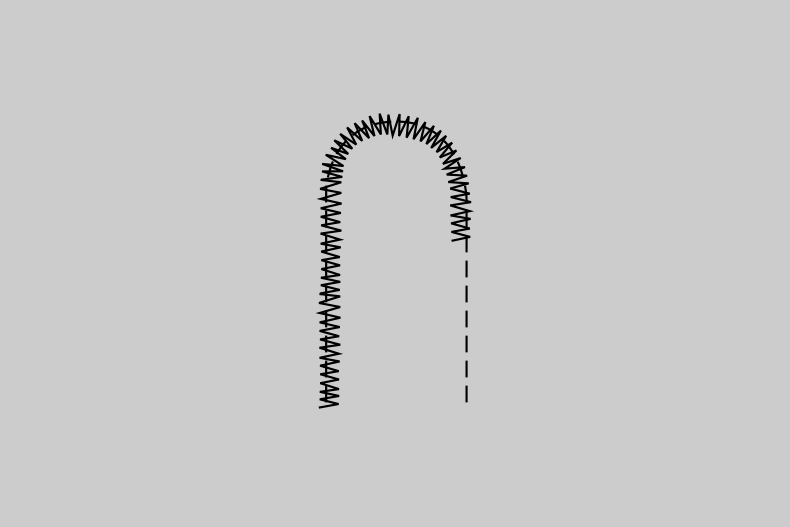
- Curves are also sewn radially, using a machine cotton yarn size 50, the edges can be covered very dense and contour lines can be clearly marked. The stitch width, depending on the material is 1.5 to 2 mm.
Appliqué at the edge
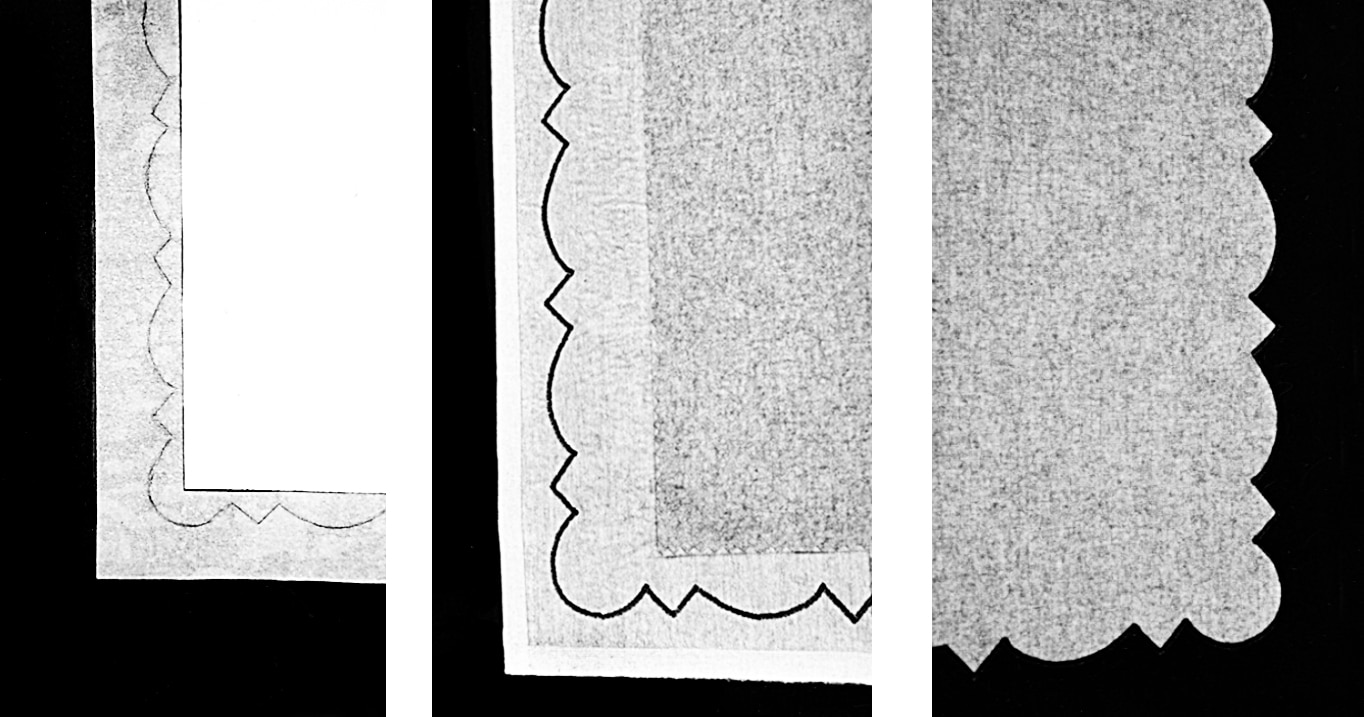
- If an appliqué is applied to the edge of a jacket, cape or coat you want to achieve smooth edges. Cut the fabric without seam allowance at the hem and the edge. Interface the outer fabric as usual. Cut the appliqué fabric into desired shape with the facing and if necessary add seam allowance. If the material can be interfaced, you will save time on pinning and moving while sewing. A time-saving adhesive web, e.g. Vliesofix from Vlieseline is recommended.
- Trace the intended pattern (reversed, depending on the course), on the transfer paper and cut it with allowance. Iron the transfer paper onto the left side of the appliqué fabric for 2 to 4 seconds and let it cool down. Cut out the pattern exactly along the lines. Remove the paper and fix onto the model. Adhesive strength is achieved after 10 minutes. Sew the edges with dense, approximately 1.5 to 2 mm wide zigzag stitches. Machine embroidery thread made of 100% cotton allows a tight stitch adjustment. Rounding must be sewn radial (inner and outer corners overlapping). Tap the edges as usual and finish the model.
Appliqué on the skirt hem
If an appliqué is applied to the hem of the skirt, the hem can be turned over or the appliqué material can be worked as a hem over the cut edge of the model.
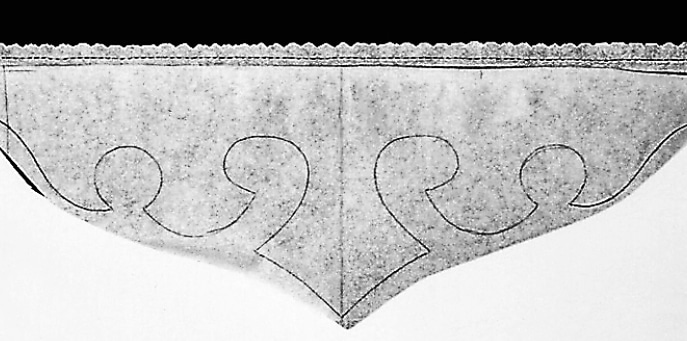
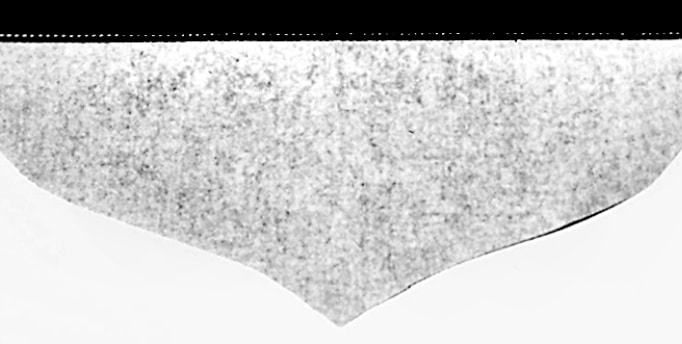
The turned over seam: Cut the shape of the edge, as a shaping panel with the required width in the appliqué fabric. If the material can be interfaced, you will save time on pinning and moving while sewing. A time-saving adhesive web, e.g. Vliesofix from Vlieseline is recommended. Trace the intended pattern (reversed, depending on the course), on the transfer paper and cut it with allowance. Iron the transfer paper onto the left side of the appliqué fabric for 2 to 4 seconds. Do not coat 1 cm for the hem seam. After cooling, connect the panel and skirt.
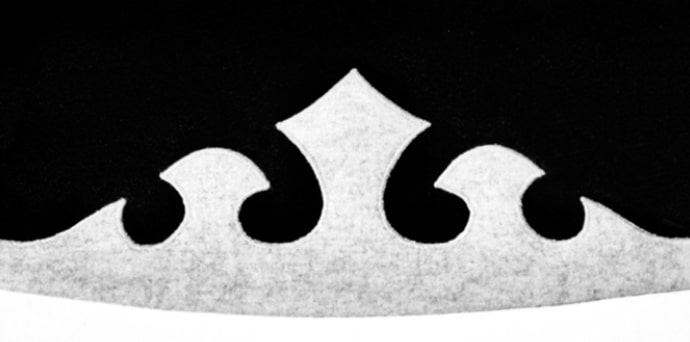
The right side of the appliqué is on the left side of the skirt. When the seam is clipped, the wider seam allowance remains on top. So the seam allowance has a smooth appearance on the right side of the fabric. If the seam is first unfolded and then ironed, the hem becomes smoother. Topstitch the seam allowance. Cut out the motif and remove transfer paper. Iron in hem edge and iron on application or fix in press. Sew the pattern with zig-zag stitches of approx. 1.5 to 2 mm. Thin sewing thread enables a dense stitch sequence for a raised contour.
Appliqué with an attached hem: If the appliqué gets a hem allowance, it reaches over the edge of the skirt. Connect both parts with loose stitches. Process the appliqué and finish the skirt hem as usual. Such techniques are gladly used in traditional costume and folklore fashion. A extension at the hem is possible.
Leather or Synthetic Leather Appliqués
Leather or Synthetic Leather can be interfaced. Keep close attention to the temperature and pressure. If you use adhesive fleece, it is advantageous that the design is mirror-inverted on the transfer paper, e.g. Vliesofix. Roughly cut out with the adhesive to the left side of the application material and dry iron for 2 to 4 seconds. Allow the paper to cool off and cut out the motif exactly along the lines. Remove the transfer paper and iron the motif with the coated side covered with a damp cloth onto the upper fabric or fix it in the press.
The adhesive strength is reached after approx. 10 minutes. In addition, it is quilted to secure durability. Leather or synthetic leather can not be easily transported in the machine. A special or Teflon-coated presser foot is suitable for quilting. Increase the pressure on the presser foot. Use silk or polyester yarn for sewing. Avoid post-sewing. By repeated piercing in the same place the leather is perforated and may give rise to tearing.
Felt Appliqués
An appliqué made of felt is suitable for all unconventional models up to the carnival costume. It is easy to produce with an adhesive fleece. The design is mirror-inverted on the transfer paper, e.g. Vliesofix. Roughly cut with the adhesive to the left side of the application material / felt dry iron for 2 to 4 seconds. Allow the paper to cool off and cut out the motif exactly. Remove the transfer paper and iron the motif with the coated side covered with a damp cloth onto the upper fabric or fix it in the press. After approx. 10 minutes, the adhesive strength is reached.
Further instructions for pattern construction and finished patterns for sewing can be found in our online shop.


